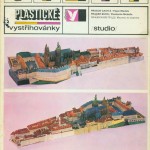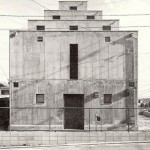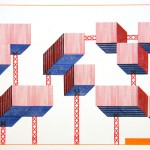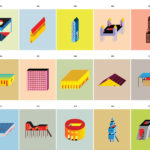
Although the 2013 Venice Art Biennale ended almost two weeks ago, we’d like to talk about one of the artworks that impressed us the most. Well, “artwork” might not be the best word, since this year’s exhibition was more about visions, researches, cosmologies than pieces purposedly created with an artistic ambition. That’s just the case for the 387 little building models made by Peter Fritz in the 1950s an 1960s. Not much is known about the author, an Austrian insurance clerk who carefully constructed and depicted the cardboard pieces. The models were not made out of existing architectures but rather were inventions of the author who probably recombined details of buildings he must have crossed in his hometown.
The collection describes a vivid sample of regional Austrian architecture where both the everyday and the vernacular find their dignity. Fritz’s aim looks encyclopaedic, a will to replicate every typology he could have imagined: the bank, the gas station, the farm-house, as well as family houses and fire stations are only some of the actors in the recreation of a sort of imaginary, yet very plausible, town.
The models, made out of recycled cardboard, were then stored each one in plastic bags and forgotten, until the artist Oliver Croy found them in a junk shop a few years ago, and, out of any chance, was able to show the results of this incredible effort to the famous venue.










Related, on Socks:
Building Faded Memories: Jockum NordstrÖM’S Cardboard Models





Take a look at Canadian cartoonist Seth’s cardboard houses for his fictional Dominion City in Palookaville #20 (Drawn & Quarterly).
http://www.graphixia.cssgn.org/2012/11/13/93-mapping-seth-dominion-city-as-heritage-site/
Quite an interesting subject, isn’t it?
Great! We’ll try to read the whole text asap, thank you for the suggestion!